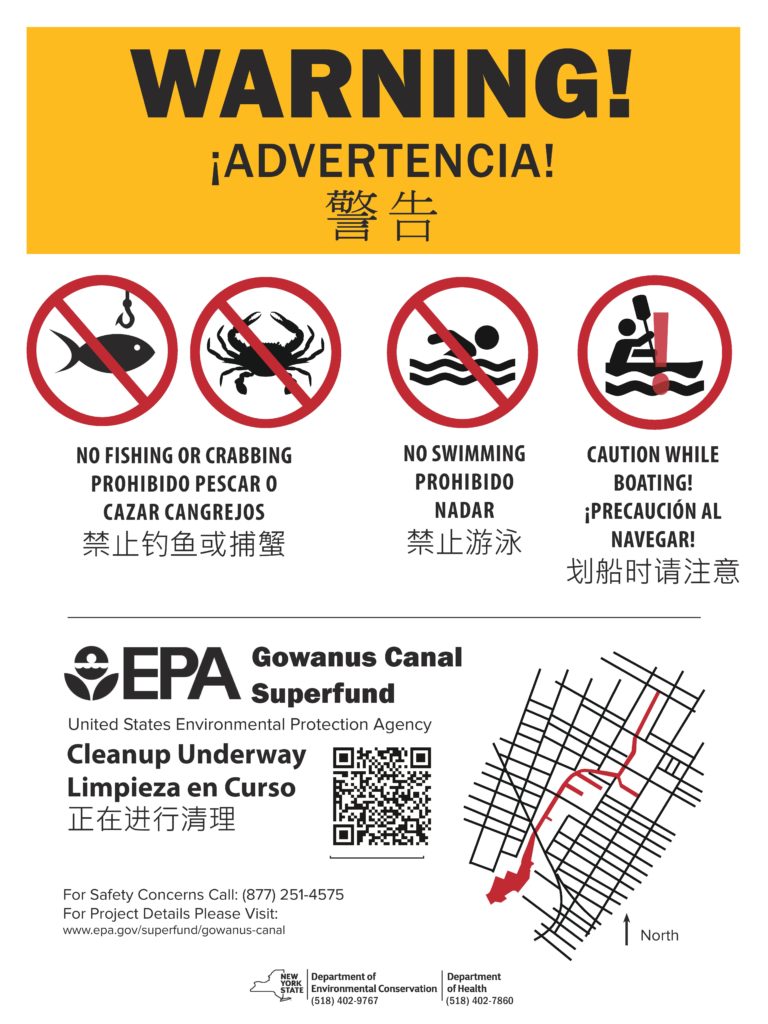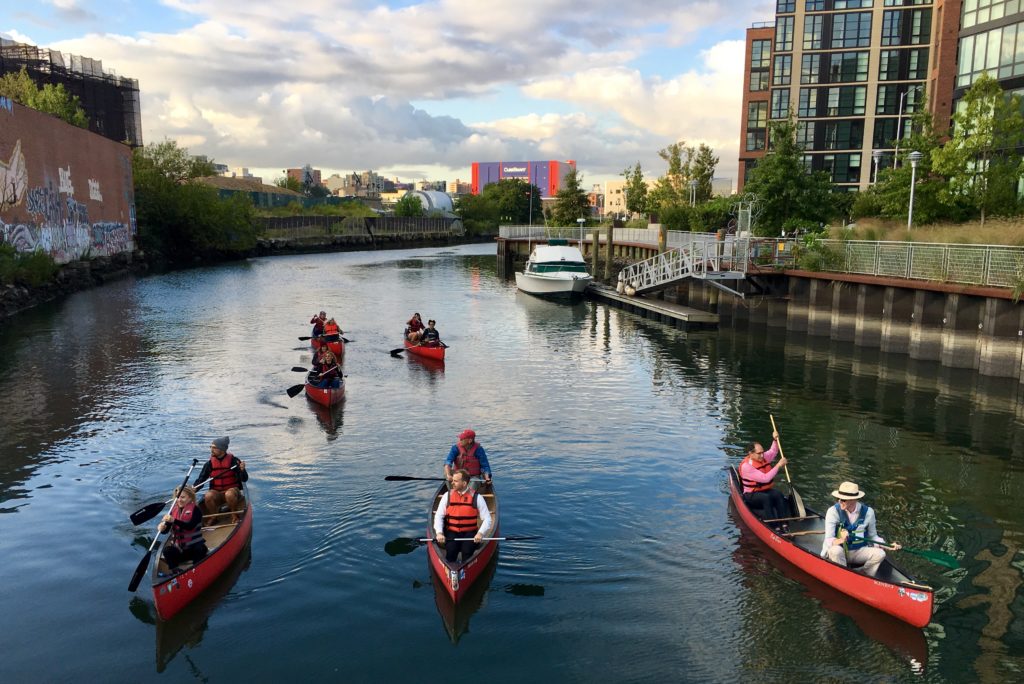BOROUGHWIDE — A cohort of city, state and federal agencies are putting up a new set of signs along the Gowanus Canal that state the obvious: Do not fish, crab or swim in the toxic waterway.
From PCBs to STDs, the 1.8-mile federal Superfund site is home to many gross things. At one point, it was nicknamed Lavender Lake for its Pepto-Bismol-like coloring.
But despite its reputation as “one of the nation’s most extensively contaminated water bodies,” according to the Environmental Protection Agency, people still do fish in the waterway — and who can forget about that one guy who swam in it?DAILY TOP BROOKLYN NEWSNews for those who live, work and play in Brooklyn and beyond
Gowanus activist Linda Marino said she recently saw a man fishing along the canal. She tried to warn him of the potential dangers, but he only spoke Turkish. “He had a huge bucket filled with fish,” she said.

The signs first went up about a year ago after a lengthy debate over their language. Now, the Department of Transportation, at the behest of community activists, will be placing at least three more signs over the next few weeks on the water side of the canal. They will be placed at the dead end of Bond Street and near the Third Street and Union Street bridges.
The placards also urge boaters to exhibit caution while on the canal.
Brad Vogel, captain of the Gowanus Dredgers Canoe Club, said that the signs should advise against eating the fish, rather than just fishing in general.
“The signs won’t have to work very hard,” he said. “The Gowanus Canal’s notoriety precedes it — almost everyone knows it’s heavily polluted. The signs are a bit overbroad since the real concern is people consuming creatures caught in the waterway. Plenty of people fish in the canal often and release what they catch.
“Thankfully the signs don’t try to ban boating; the original draft sign did before we raised concerns on behalf of all the boaters, canoeists, and kayakers who have been plying the waters of the Canal for decades despite its Styx-like state.”

The signs are in English, Spanish and Mandarin. The new ones will supplement a series of existing signs along the canal in places where fishing has been seen, as well as near combined sewer overflow outfalls.
The canal is polluted due to decades of industrialization, combined sewer overflow, storm water runoff and other discharges.
One would hope that the coal tar glistening off the water or the pungent fumes emanating from the canal on a hot summer day would be enough to deter people from fishing or swimming, but in case you needed some additional reasons not to interact with the cauldron of toxins, you can refer to the laundry list of contaminants present there. Just some:
- PCBs
- Coal tar
- Metals
- Volatile organic compounds
- Raw sewage
- Fecal coliform bacteria
- Cancer-causing chemicals
And if that’s not enough to discourage you from cooking up that bass you caught in the canal, here’s some more history:
- The canal contained typhoid and “virulent” cholera in the 1970s.
- Gonorrhea was found in there in 2007.
- Sludgy the Whale died after visiting the canal. RIP.
- A “three-eyed catfish” was caught there.
- Black Mayonnaise. Need we say more?
A New York State Department of Health report released in 2017 says that women under 50 and children under 15 should not eat fish and crabs in the canal, but apparently women over 50 and men over 15 can ingest up to one meal a month of its striped bass, rainbow smelt, bluefish and Atlantic needlefish, and up to four meals a month of blue crabs. Yum.

 Former deli owner Helene Bakke dies
Former deli owner Helene Bakke dies  Senior killed by own car
Senior killed by own car